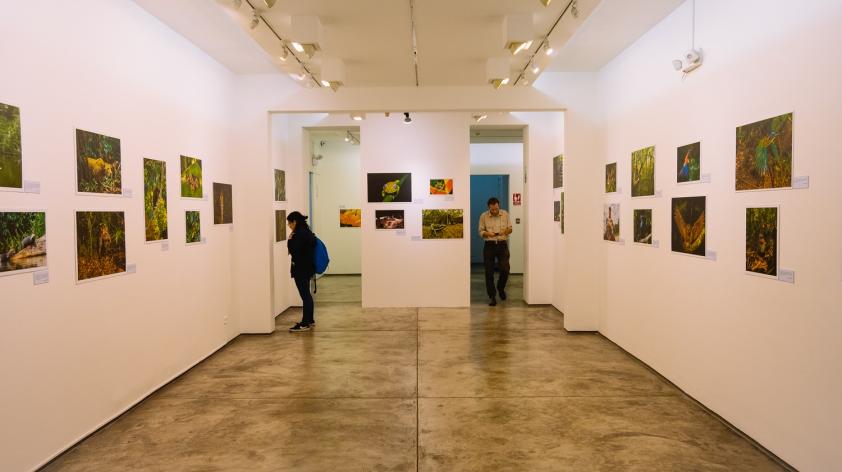
Cocha Cashu: Peru's National Treasure
We scramble to complete the information panels on the walls, gather the trash strewn over the floor, and put the finishing touches on the arrangements for receiving our visitors: the table with the welcome packs and registration book, the catering, the seating for 80 people in the upstairs auditorium. I quickly pass a soft cloth over each of the photos and legends to remove remaining specks of dust, and rush to the restroom to get changed.
At last we're ready.
Weeks of preparations – identifying a suitable space to hold the two-week exhibition; finding sponsors; contacting photographers and curating images; writing, editing, and proofreading a press release, legends, and catalogue texts; promoting on social media; hiring an event photographer and videographer; selecting the catering; designing the special awards; mounting the exhibition; and, most importantly, inviting and confirming the attendance of guests – have culminated in this evening's grand inauguration.
It is June 5th, World Environment Day, a fitting day on which to open our photo exhibition to celebrate the 50th anniversary of the Cocha Cashu Biological Station.
Founded in 1969, it has been managed by San Diego Zoo Global since 2011, together with Peru's Service for Protected Areas (SERNANP). Though we are far from the Station now – the exhibition is being hosted by the Brazil-Peru Cultural Centre, of the Brazilian Embassy, in Lima – the 50 images all around us, by 14 national and international photographers, bring Cashu to life for an audience that might otherwise never learn about this national treasure, of which they can be justifiably proud.
The first invitees begin to trickle in, and before long the room is buzzing with conversation. We lead guests to the auditorium upstairs, and they browse through the content of their welcome packs while they wait.
Suddenly, we receive news that Peru's Minister for the Environment, Lucía Ruiz, is on her way to join us. Meanwhile we greet SERNANP and Manu Park authorities, our two sponsors, members of other government agencies and embassies, representatives of various NGOs and universities, several journalists and, of course, "Cashu Nuts" and alumni of our annual Tropical Ecology course.
By the time the Minister arrives, the auditorium is packed, with many people having to stand.
The ceremony begins at 7:45, with opening words by the Director of the Peru-Brazil Cultural Centre, the Director of Cocha Cashu, the Head of SERNANP ("Cocha Cashu would not exist without Manu National Park, and Manu National Park would not exist without Cocha Cashu.") and the Head of Manu National Park, among others.
But the highlight is the presentation of special awards – carved plaques of cedar wood harvested sustainably from a tree that has floated down the Manu River – to eight individuals and institutions who have played key roles in the foundation and development of the Station. The Minister closes the ceremony with a heartfelt toast to a bright future for Cocha Cashu and we all troop downstairs with our pisco sours to admire the exhibition.
I spend the evening in a rosy haze, chatting to guests, watching the Minister being interviewed by a TV crew, joining in group photos taken with a large image of the Station in the background.
The room is alive with laughter and glowing with colour and we receive lots of compliments. By 10 pm we are gently reminded that the Centre must close for the day, and we usher the remaining guests to the door. When all have left, I take a last look around the gallery, at the jaguar and the giant otters and purple-eyed tree frog, and breathe a sigh of relief.
The inauguration has been a success, and tomorrow I will bring my own family to see the wonders of Cocha Cashu.













